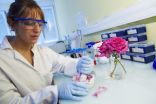The sting in dengue's tail
Singapore scientists show how dengue virus evolves to spread more efficiently
2015-07-02
(Press-News.org) In a new Science study, Duke-NUS Graduate Medical School Singapore (Duke-NUS) scientists have identified how small changes in dengue's viral genome can affect the virus' ability to manipulate human immune defences and spread more efficiently. This research is the first of its kind that examined the dengue virus starting from broad population level observations and then linked it to specific molecular interactions, to explain an outbreak. This work provides a framework for identifying genomic differences within the virus that are important for epidemic spread.
Dengue virus is endemic in over 100 countries and its global spread has increased its genetic diversity. This is problematic as genetic diversity increases the chances that new strains of dengue virus could emerge that have a greater inherent capacity to cause outbreaks.
To understand this phenomenon better, Duke-NUS Associate Professor Eng Eong Ooi led a team that identified how a new strain of dengue serotype 2 virus (DENV-2)* emerged and completely displaced an older strain of DENV-2 during the 1994 dengue epidemic in Puerto Rico. The team found three mutations in the tail of the dengue genome that enabled the virus to make short fragments of genomic material, which consisted exclusively of its tail. The tail is how the virus got its sting or potency, as it was the tail that bound to a protein and supressed the human antiviral response. The suppressed human antiviral response allowed the new strain of DENV-2 to then spread more efficiently within an infected individual and increased its chances of infecting fresh mosquitoes for virus transmission.
The study provides unique insights into what determines dengue virus resilience in a real life setting. It also suggests that combining population studies with molecular investigations result in genetic information that explains virus evolution better, and that could be further developed into a predictor of epidemics.
"Firstly, our findings show that not all dengue viruses have the same ability to cause epidemics," said Dr. Ooi, who is Deputy Director the Emerging Infectious Diseases (EID) Programme at Duke-NUS. "Secondly, they imply that identifying the molecular signatures that allow the viruses to spread more efficiently could help focus public health resources on more important strains of viruses."
Singapore, and other countries where dengue is endemic, could use the framework in this study to identify the genomic differences in dengue that impacts epidemic emergence. Cataloguing the differences could then facilitate how genomic information can be used to guide dengue surveillance and response better.
INFORMATION:
Study authors include first author Gayathiri Manokaran from Duke-NUS and the National University of Singapore, co-author Professor Mariano Garcia-Blanco from Duke-NUS and other national and international collaborators.
*Dengue virus has four serotypes (DENV1-4) circulating in nature.
ELSE PRESS RELEASES FROM THIS DATE:
2015-07-02
This news release is available in Japanese. Detailed tabletop experiments are helping researchers understand how Earth's landscapes erode to form networks of hills and valleys. The findings, which highlight a balance between processes that send sediments down hills and those that wash them out of valleys, might also help researchers predict how climate change could transform landscapes in the future. Kristin Sweeney and colleagues developed a laboratory device that mimicked the processes that smooth or disturb soil to make hillslopes, and those that cut it away to make ...
2015-07-02
This news release is available in Japanese. Researchers have discovered that a human antibody specific to dengue virus serotype 2, called 2D22, protects mice from a lethal form of the virus -- and they suggest that the site where 2D22 binds to the virus could represent a potential vaccine target. The mosquito-borne virus, which infects nearly 400 million people around the world each year, has four distinct serotypes, or variations, and there is currently no protective vaccine available. Recent phase 3 clinical trials of a potential vaccine candidate showed poor efficacy, ...
2015-07-02
Why is the seahorse's tail square? An international team of researchers has found the answer and it could lead to building better robots and medical devices. In a nutshell, a tail made of square, overlapping segments makes for better armor than a cylindrical tail. It's also better at gripping and grasping. Researchers describe their findings in the July 3 issue of Science.
"Almost all animal tails have circular or oval cross-sections--but not the seahorse's. We wondered why," said Michael Porter, an assistant professor in mechanical engineering at Clemson University and ...
2015-07-02
This news release is available in Japanese. Researchers working with roses have identified an enzyme, known as RhNUDX1, which plays a key role in producing the flowers' sweet fragrances. These ornamental plants, which provide essential oils for perfumes and cosmetics, have been bred mostly for their visual traits, and their once-strong scents have faded over the generations. Restoring their fragrant odors will require a better understanding of the rose scent biosynthesis pathway. Until now, most studies of rose fragrance have focused on a biosynthetic pathway that generates ...
2015-07-02
This news release is available in Japanese. The seahorse tail is square because this shape is better at resisting damage and at grasping than a circular tail would be, a new engineering study shows. Insights gleaned from the study could inspire new armor and advances in robotics, the authors say. While most animals with tails, including certain monkeys, lizards and rodents, have soft, cylindrical-shaped appendages, tails of seahorses are organized into square prisms surrounded by bony plates. To better understand why the seahorse tail deviates from the norm, and what ...
2015-07-02
Mass killings and school shootings in the U.S. appear to be contagious, according to a team of scientists from Arizona State University and Northeastern Illinois University.
Study author Sherry Towers, research professor in the ASU Simon A. Levin Mathematical, Computational and Modeling Sciences Center, explained, "The hallmark of contagion is observing patterns of many events that are bunched in time, rather than occurring randomly in time."
Her team examined databases on past high-profile mass killings and school shootings in the U.S. and fit a contagion model to ...
2015-07-02
Climate change is forcing fish out of their current habitats and into cooler waters and many more species will soon be affected if climate goals are not met, say scientists.
An international team of researchers compared the future of the oceans under two climate change scenarios. In one scenario, we limit atmospheric warming to two degrees by 2100, as outlined by the Copenhagen accord. In the other, we continue with the current approach, which researchers say would cause a five-degree increase in atmospheric temperatures. They say if warming continues unchecked, fish ...
2015-07-02
A new study has discovered mysterious behaviour of a material that acts like an insulator in certain measurements, but simultaneously acts like a conductor in others. In an insulator, electrons are largely stuck in one place, while in a conductor, the electrons flow freely. The results, published today (2 July) in the journal Science, challenge current understanding of how materials behave.
Conductors, such as metals, conduct electricity, while insulators, such as rubber or glass, prevent or block the flow of electricity. But by tracing the path that electrons follow ...
2015-07-02
Researchers at Vanderbilt University and the National University of Singapore have determined the structure of a human monoclonal antibody which, in an animal model, strongly neutralizes a type of the potentially lethal dengue virus.
The finding, reported today July 2 in the journal Science, could lead to the first effective therapies and vaccines against dengue, a complex of four distinct but related mosquito-borne viruses that infect about 390 million people a year and which are a leading cause of illness and death in the tropics.
"Scientists in the antibody discovery ...
2015-07-02
NEW BRUNSWICK, N.J., - July, 2, 2015 - Johnson & Johnson (NYSE: JNJ) announced today that scientists at Beth Israel Deaconess Medical Center (BIDMC), Crucell Holland B.V, one of the Janssen Pharmaceutical Companies of Johnson & Johnson (Janssen), and several other collaborators today published results from a preclinical study of an HIV vaccine regimen used in in non-human primates. The study, published in the online edition of Science, suggests that a "heterologous prime-boost" vaccine regimen--which first primes the immune system, then boosts the immune system to increase ...
LAST 30 PRESS RELEASES:
[Press-News.org] The sting in dengue's tail
Singapore scientists show how dengue virus evolves to spread more efficiently



